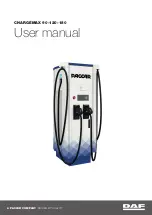
-
1
-
About the Prius V
The Prius V 5-door wagon joins the Prius, Camry Hybrid and
Highlander Hybrid as a hybrid model for Toyota. Hybrid Synergy
Drive means that the vehicle contains a gasoline engine and an electric
motor for power. The two hybrid power sources are stored on board
the vehicle:
1. Gasoline stored in the fuel tank for the gasoline engine.
2. Electricity stored in a high voltage Hybrid Vehicle (HV) battery pack
for the electric motor.
The result of combining these two power sources is improved fuel
economy and reduced emissions. The gasoline engine also powers an
electric generator to charge the battery pack; unlike a pure all electric
vehicle, the Prius V never needs to be charged from an external electric
power source.
Depending on the driving conditions one or both sources are used to
power the vehicle. The following illustration demonstrates how the
Prius V operates in various driving modes.
n
During light acceleration at low speeds, the vehicle is powered by
the electric motor. The gasoline engine is shut off.
o
During normal driving, the vehicle is powered mainly by the
gasoline engine. The gasoline engine also powers the generator to
charge the battery pack.
p
During full acceleration, such as climbing a hill, both the gasoline
engine and the electric motor power the vehicle.
q
During deceleration, such as when braking, the vehicle regenerates
kinetic energy from the front wheels to produce electricity that
charges the battery pack.
r
While the vehicle is stopped, the gasoline engine and electric motor
are off, however the vehicle remains on and operational.





































